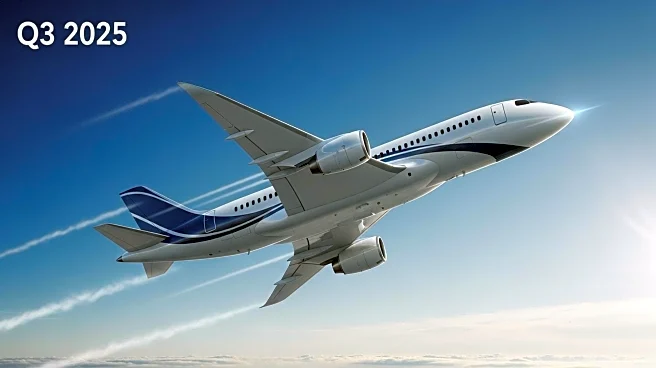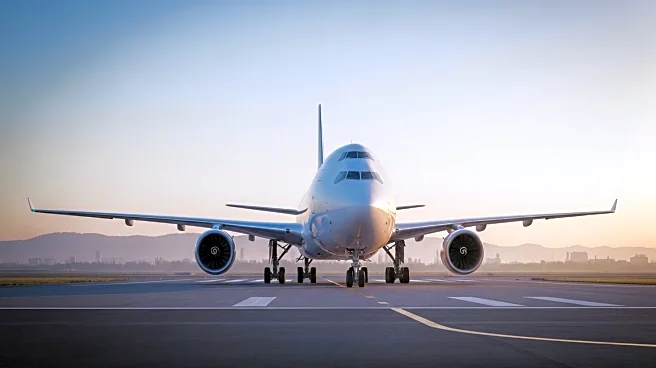What is the story about?
What's Happening?
Global aviation capacity is projected to reach 1.6 billion seats in the third quarter of 2025, marking a 2.6% year-on-year increase and a 5.7% rise compared to 2019 levels. The Asia-Pacific region is leading the growth with nearly 15 million additional departure seats, followed by Europe with 13.2 million more seats. Africa is experiencing the strongest year-on-year expansion at 5.7%, while North America shows the weakest growth at 0.5%. The overall increase reflects the aviation industry's stabilization post-pandemic, with varying growth rates across regions due to factors like yield management and supply chain constraints.
Why It's Important?
The increase in global aviation capacity signifies the industry's recovery and adaptation to new market dynamics post-pandemic. The growth in Asia-Pacific highlights the region's role as a major driver of global seat growth, benefiting from long-haul demand and strong intra-regional travel. In contrast, North America's modest growth reflects challenges such as supply chain issues and labor constraints, impacting airlines' ability to expand. The varying growth rates across regions underscore the shifting priorities and strategies within the aviation sector, with implications for international travel, tourism, and economic development.
Beyond the Headlines
The stabilization of global aviation capacity suggests a long-term shift in travel patterns, with regions like Asia-Pacific emerging as key players in the industry. The focus on yield management and competitive pricing in North America indicates a strategic approach to maintaining profitability amid constraints. The growth in Africa and the Middle East highlights opportunities for expanding air services and enhancing connectivity, potentially leading to increased economic activity and cross-border collaboration.
AI Generated Content
Do you find this article useful?














